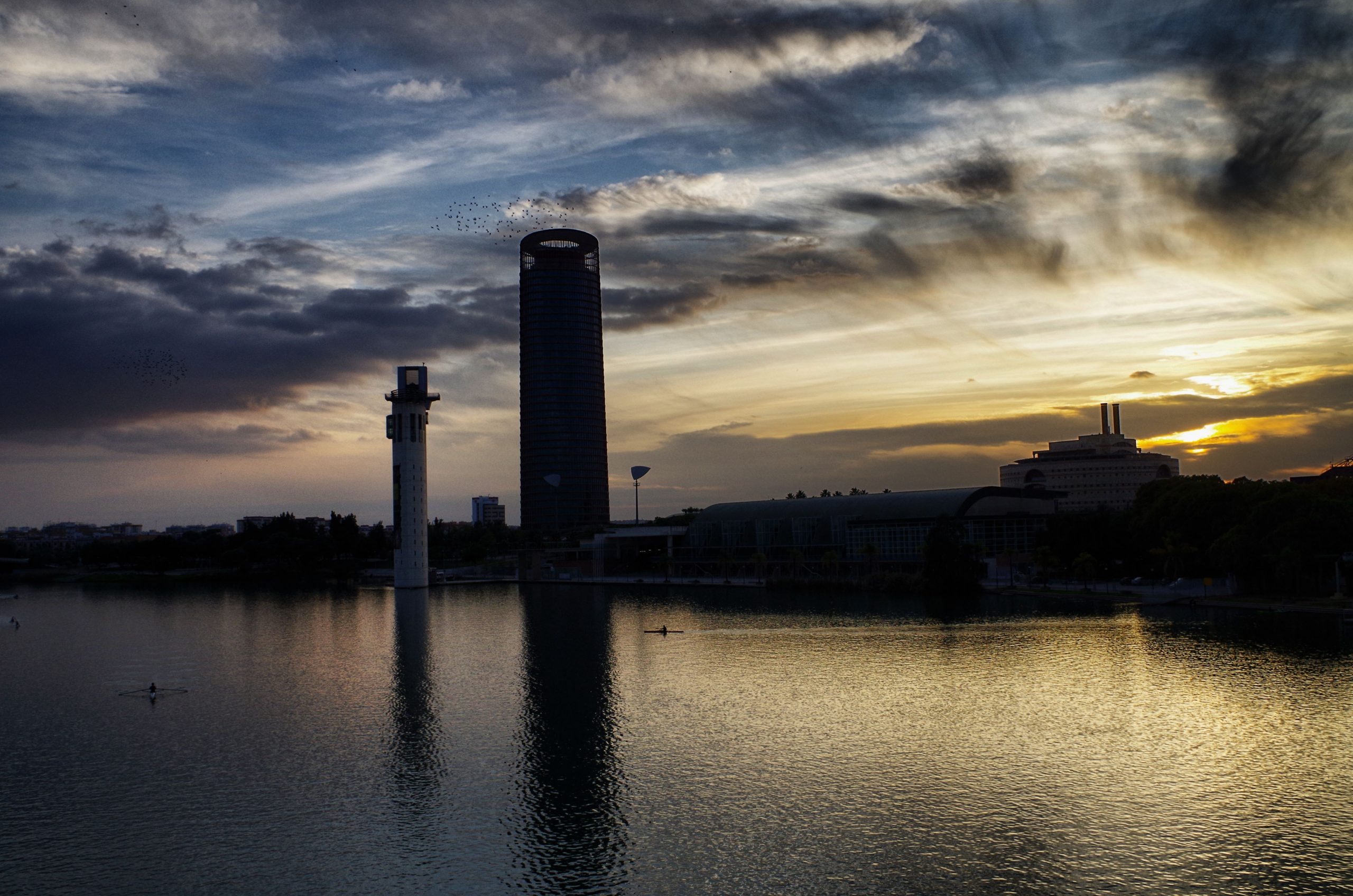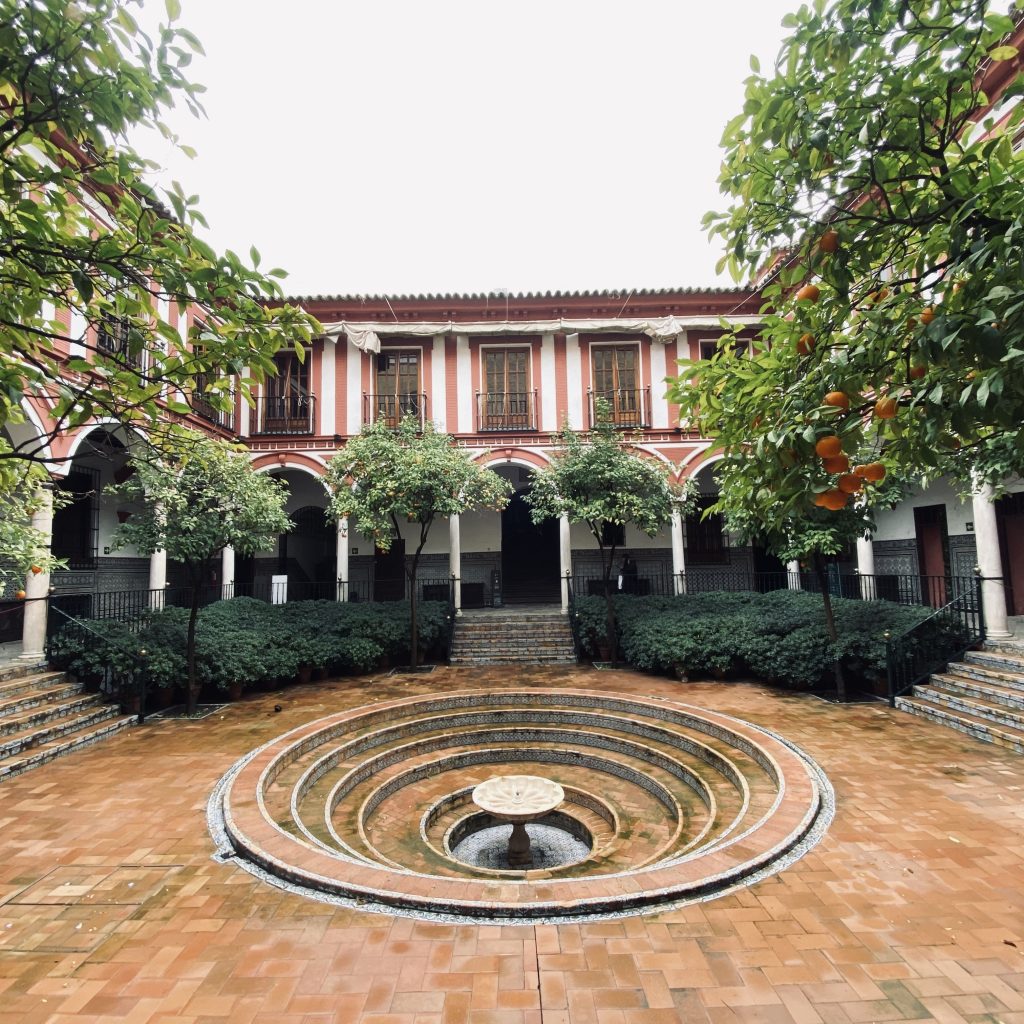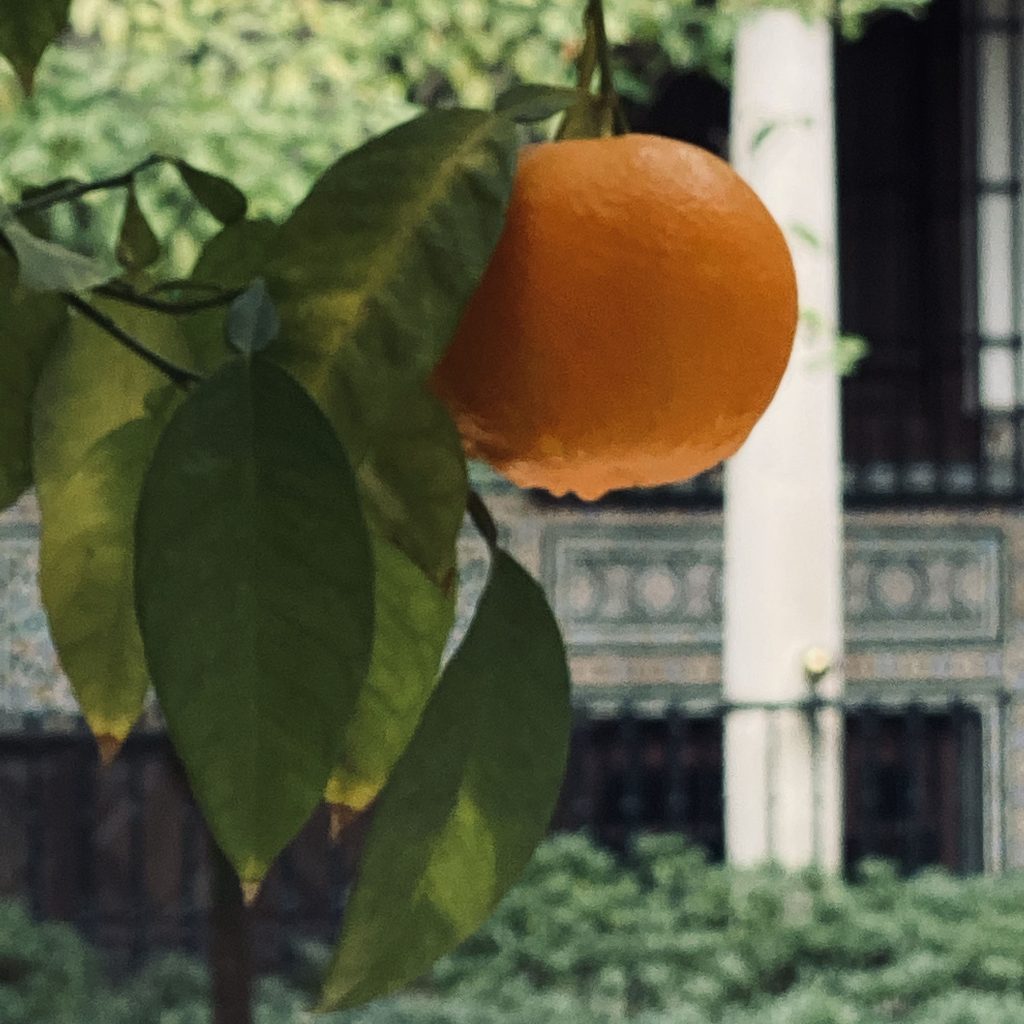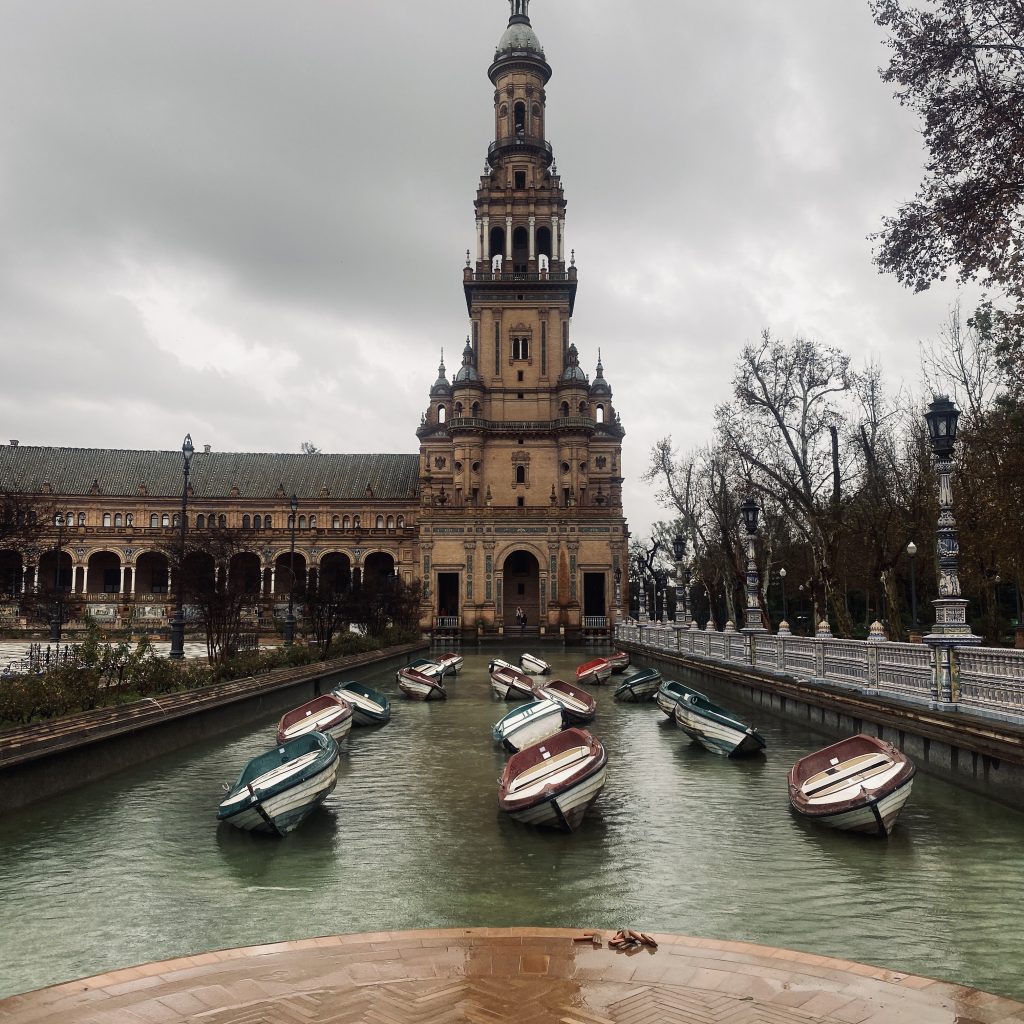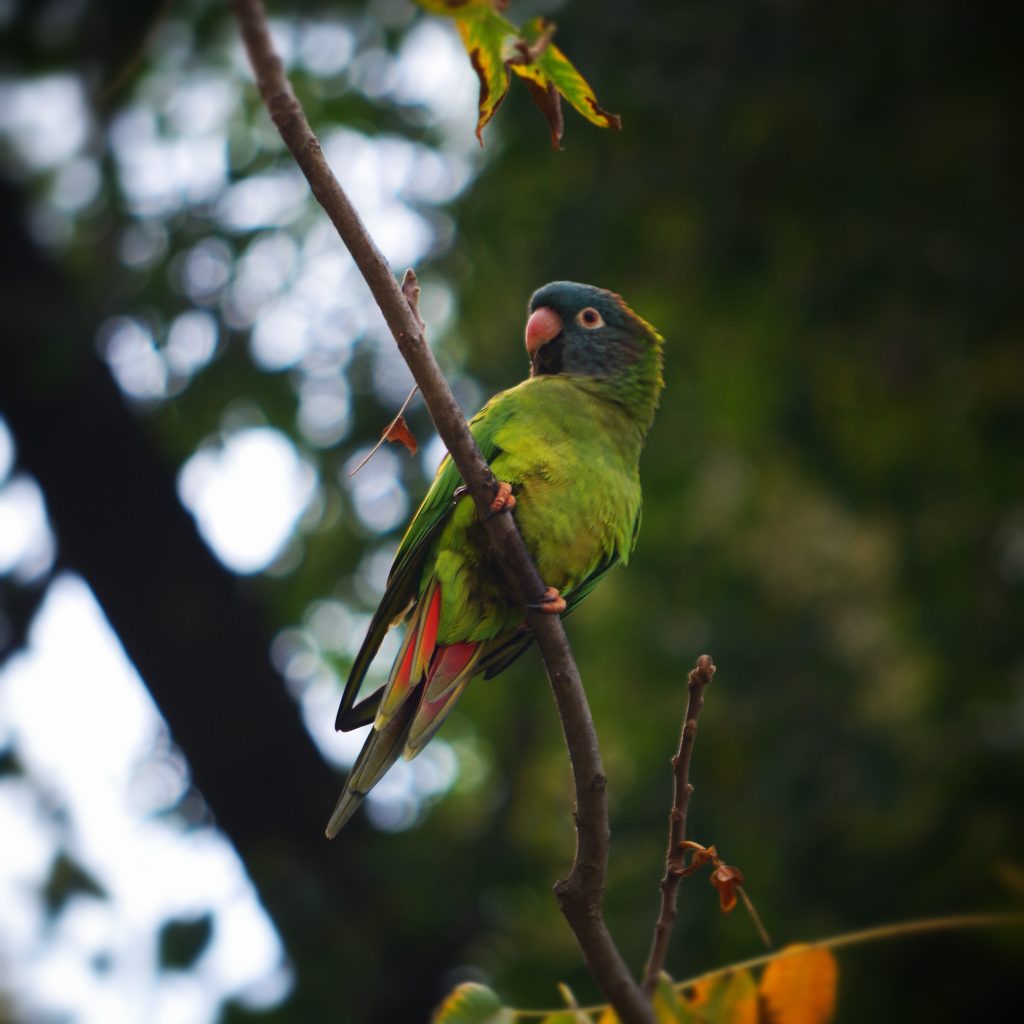
Leather handicraft straight from the workshop on four wheels
Wandering through Iberian lands
Seville is a city of many faces – it boasts a rich history dating back to the 7th century BC. Called the cradle of flamenco, delights with Moorish architecture reminiscent of five centuries of Arab domination.
31/05/2020 4:12 PM
Today we want to take you on a short trip to Seville - one of the most visited by tourists places in Spain. The first article in the series, as in the case of Malaga, will introduce you, dear reader, to the history of this city, and in the next episode we will tell you everything you need to know when planning your visit – most (and also least!) important monuments, where and what to eat and what is Seville famous for. It is the fourth largest city of Spain after Madrid, Barcelona and Valencia. It has the status of a double capital – of the province and of the autonomous community - Andalusia (the second largest in terms of area autonomous community in Spain after Castilla y Leon). Seville is the largest and most populated capital of Andalusia. About 740,000 inhabitants live there (+ about 300,000 inhabitants in nearby so called city-bedrooms; the entire province has about 2 million inhabitants). It is not located on the coast, only on the Guadalquivir River bank - if we wanted to sail down to the ocean we would have to cover 90 km.
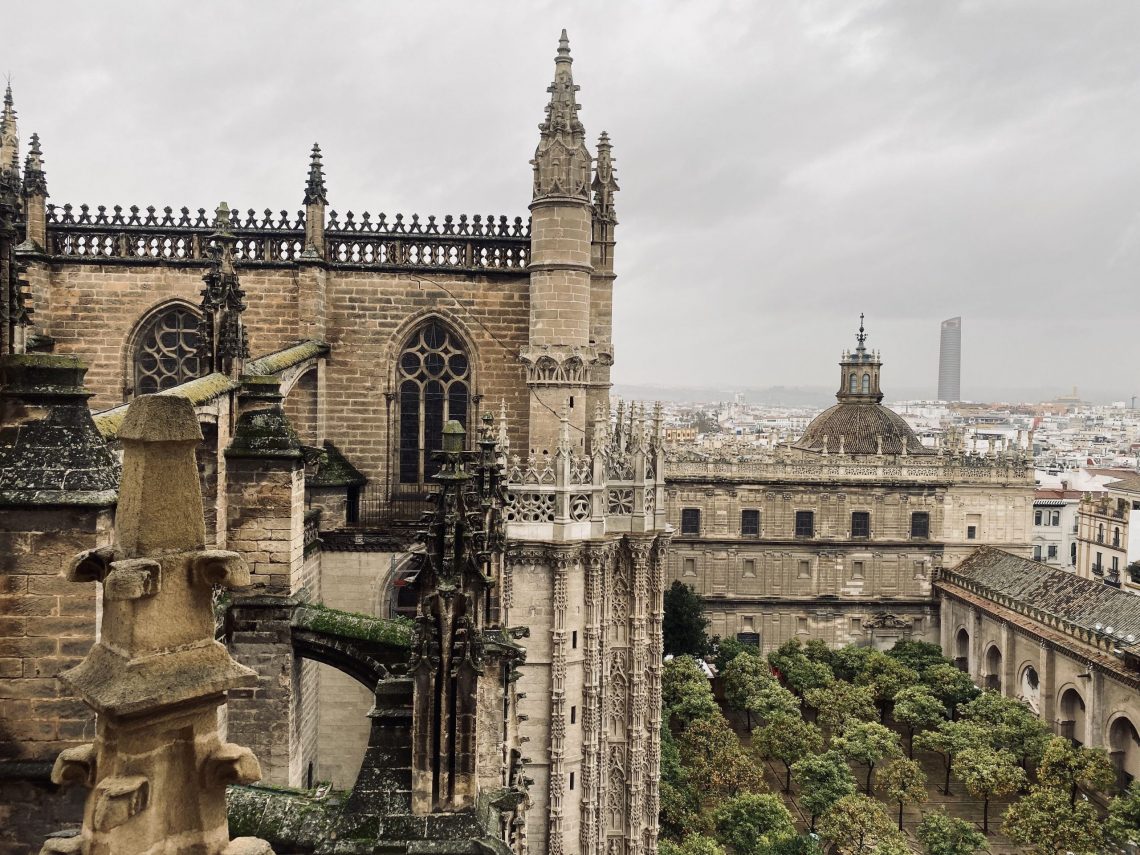
From the Iberian tribes, through Phoenicians, Greeks and Carthaginians to Roamns
The history of Seville dates back to the 7th century BC when Turdetans, the Iberian tribes who settled along the Guadalquivir River, founded their settlement there. The settlement, which they called Hispal, was developing rapidly due to its location by the river. Later came the Phoenicians and Greeks. Carthaginians destroyed the settlement in the 2nd century BC. The Romans founded the settlement of Hispalis, the first Roman one on the Iberian Peninsula - to this day the inhabitants of Sevilla are called „hispalenses”. The Romans called the river Betis (the whole area was named Betica after the river - it was a Roman province with the capital in Corduba - today's Córdoba) - probably the football club Real Betis Balompié took its name from that. In 206 BC Publius Cornelius Scipio Africanus (Roman commander) founded Italica - a colony for native Romans and war veterans. It is now an archaeological site in Santiponce, near Seville. It was in Italica that Trajan and Hadrian were born - the first emperors born outside Rome. The conquest of other provinces began, and in the meantime the trade and production of garum - the delicious aphrodisiac of fermented fish guts that we have already mentioned before - was already growing.
The Romans and the Germanic Tribes
In 45 BC, the settlement was conquered by Julius Caesar, on whose order the defensive walls were erected and the place renamed to become Colonia Julia Romana. In Seville, the ruins of the amphitheater from the Roman period have been preserved, where it is estimated that 25,000 people could fit. Christianity arrived here as early as the 3rd century when Rufina and Justa - martyrs from Seville from the times of the persecution of Christians during the reign of Diocletian - died.
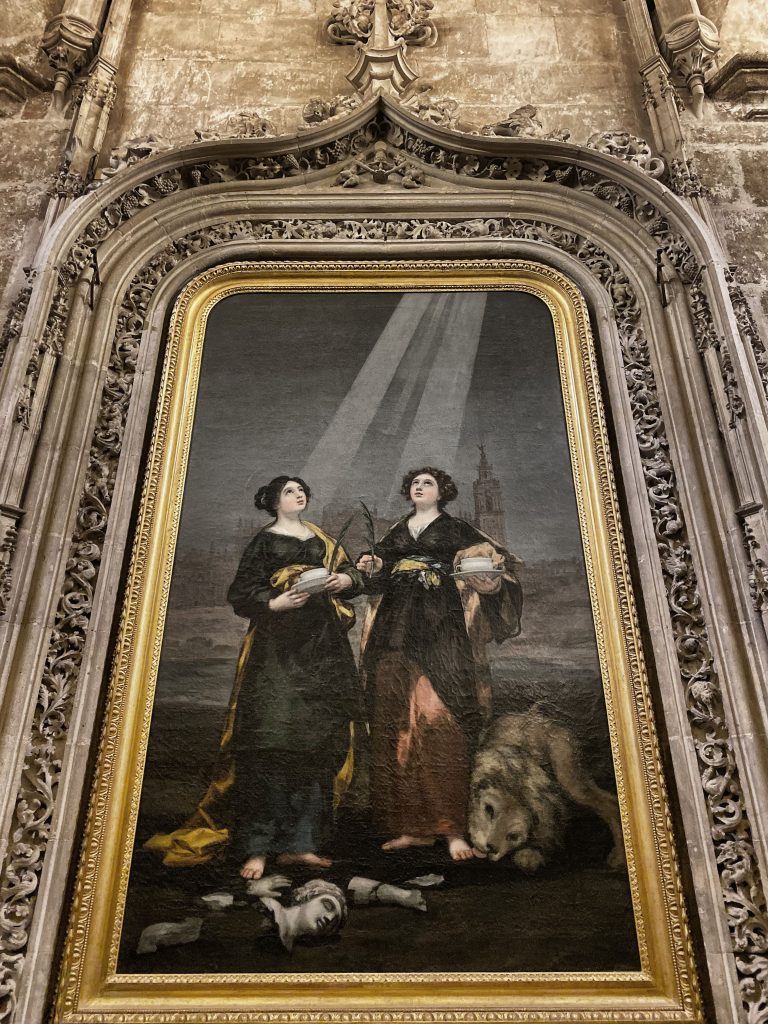
Apparently, in a pagan procession they destroyed the statue of an idol, and then they were arrested and tortured by the governor. As they died a martyr's death they became saints and over time also patrons of Seville and ... potters. On the right, the painting "Santas Justa y Rufina" by Francisco de Goya y Lucientes - you can see it in the Cathedral of Seville.
Sevilla has as many as 6 patrons - in addition to the already mentioned St. Rufina and St. Justa we can name Mother Mary, St. Isidore and St. Leander and King Ferdinand III the Saint (St. Ferdinand).
At one point, the Roman Empire already occupied such a large area that it was difficult to command. It began to struggle with economic and political problems. Germanic tribes took advantage of the weakening of the Empire and invaded the Iberian Peninsula. Soon in the current Seville and all of Andalusia appeared among others Vandals and Suebi, who destroyed almost everything. Of course, disputes and conflicts also took place between Germanic tribes, and so in the second half of the 5th century the largest part of the Iberian Peninsula and Gaul was occupied by the Visigoth Kingdom.
Visigoths called the city Spali and during the synod in Toledo in 589 their king Rekkared I and all the people changed from Arianism to Catholicism. There was one important person who co-organised this event and lived in Seville – archbishop Leander. Because it was thanks to him that the whole nation was baptized and during his lifetime he greatly contributed to the development and spread of the Catholic religion, after his death he was canonized. His brothers – Isidore and Fulgentius and his sister Florentina also became saints. Isidore was elected the metropolitan of Seville after the death of his brother. During his lifetime, Isidore strengthened the Church in Spain, convened synods, founded schools and religious houses. According to many sources: Saint. Isidore of Seville is considered the most prominent saint-bishop from Spain. While John Chrysostom is considered the greatest preacher of the Eastern Church, Isidore is often seen as the author of the most beautiful and accurate sermons of the Western Church.
When the Visigoths were baptized, the city became the capital of the archdiocese, and both the archbishops from the period mentioned above became the next patrons of the city - St. Leander and St. Isidore. They rebuilt the city after the Vandals.
The Arab Domination
You know the next stage of the story, because we wrote about it in the article about Malaga and the one about Algarve, and we will surely often mention it again. In 711 Táriq ibn Ziyad, a Berber commander, crossed the Strait of Gibraltar and on April 27 he went ashore near Tarifa and Gibraltar (the name comes from the Arabic language and means, in honor of this leader, Rock of Tarik (Jabal al tariq)). Táriq ordered all the ships to be burned to let his army know that there was no turning back. Muslim army begins to conquer Andalusia and in 712 reaches Sevilla. Tariq represents the Umayyad dynasty ruling at that time (it was a dynasty that ruled the Islamic world in the years 661 to 750, and Al-Andalus from 756 to 1031).
The raid on Seville was carried out by the governor and general (Yemeni) - Musa, who in 716 managed to conquer the city but soon after was murdered. Seville temporarily served as the capital of Al-Andalus (that was the name of the Iberian Peninsula during Arab rule). Later the government was transferred to Cordoba. During the Muslim period the city flourished - Sevilla was then called Isbiliya (Sivilia → Sevilla) and the river al-wādi al-kabīr = great river. Muslims, although their intention was the expansion of Islam, tolerated other beliefs and did not prohibit them. Christians who converted to Islam were called muladi, and those who remained with their religion and lived among the followers of Islam - the Mozarabs.
In 844, about 80 Viking ships flowed into the Guadalquivir River and reached Seville, causing great damage. The Emir of Cordoba prepared forces that fought the invaders who suffered a huge defeat. Ships were destroyed, prisoners were captured - some were taken prisoners, others were executed. Some who survived, converted to Islam and started to grow cattle and specialised in dairy products - imagine that to this day, some Seville cheeses have Scandinavian roots!
In 1063 Ferdinand I of Castile found a security hole and invaded Seville, so its king, Al-Mutamid, had to "buy" peace and from that moment Sevilla had to pay the tribute. From 1023 the city became the capital and residence of the Abbasids, in 1091 the Almoravids, and in 1145 the Almohads (these are the next ruling dynasties); during this period the city flourished, the following buildings were constructed:
- The Giralda tower was a minaret at the mosque, it was being built in the 12th century for 12 years and elements from the ancient city of Italica were used in the construction (this settlement was inhabited until Muslim times, but in the Arab period it was completely deserted and fell into oblivion). Today, Giralda is the bell tower of the cathedral. An interesting fact is that there are no stairs inside, and of course no elevator. Why? Well, the tower is very high and it was from its top that the muezzin delivered the adhan (call to prayer). So that he did not have to walk up, he rode a horse, which is why inside the Girlada we will find wide ramps leading to the top. The tower, in addition to religious functions, also served as an observatory.
- Alcazar castle(in the photo on the right)
- the pontoon bridge ("de barcas") that connected Triana (a district on the other side of the Guadalquivir River) with Sevile – it no longer exists
- The Golden Tower - Torre del Oro (1220-1221) - completed the city's defense system by being part of the city walls - it was connected with the Silver tower at the Santander Street and the Abd al-Aziz Tower on Constitution Avenue and with the Alcazar Palace
The time of the Moorish rule was often called a period of restless prosperity. Why? Well, ordinary people were living quite peaceful lives at that time. We must remember that the average person who deals with farming or baking bread is not interested in whether a Spanish, Vandal or Muslim is in power. For him it is important how high taxes he must pay and whether he can live in peace and provide for his family. Let me remind you that the Moors did not forbid the conquered population to preserve their faith, taxes were at a decent level, so generally there was prosperity. And why restless? Because the peace was notoriously violated by the invasions of Christian troops who tried to recapture their lands.
The Spanish Seville
In 1248 Ferdinand III of Castile destroyed the bridge connecting two halves of Seville and that enabled him to conquer the city after a nine-month siege. He transformed all mosques into Catholic churches and banished all other religions. In 1252 the king died and was the first in history to be buried in a mosque (which was already used as a church). He was canonized and his day is May 30th (he is another patron of the city). From that moment, the aristocracy began to arrive to Seville.
Alfonso X the Wise became the next king, he is often considered one of the best rulers. The son of Ferdinand, much more tolerant and progressive, wanted all cultures to coexist - Christian, Arabic and Jewish (during his reign a Jewish quarter was created). This is another good period for the city's development.
New churches are emerging, including the reconstruction of the former mosque into a cathedral. According to tradition, year 1401 is considered the beginning of work, but until 1433 there are no documented references. In 1478, Prince Juan, son of Ferdinand and Isabelle (Catholic Monarchs) was baptized in the New Cathedral. The works lasted until 1506.
In 1480 the first Inquisition Tribunal began operating. In 1483, the last Jews left the city (9 years before the official decree) but converts or New Christians (Jews who theoretically changed their faith to Christianity) remained. On February 6, 1481, the first Act of Faith in Seville - Auto General de Fé - took place. What was the Act of Faith? It was the last stage of the inquisition process, or more simply – death by burning. The convicts, dressed in appropriate robes, were led to the square, where the audience was already gathered. They did not know then that some of them had already been pardoned. They were convinced that everyone would be burned and their confession could save them from death. However, this was not the case. During the trial, the decision was made as to who would go to the stake. When they were all brought to the place of the execution they had different clothes - other colour of the robe for those who were sentenced to death and other for those whose life was to be spared. So what was the confession for? Those who were convicted and put on the stake had a chocie – they were asked whether they want die as a Catholics. If the answered was yes the they were awarded with a grace of quick death – strangled before being burned so they avoided being burned alive.
The capital of the Spanish Empire thanks to Christopher Columbus
In 1493, the Catholic Monarchs allowed Christopher Columbus to sail west in search of a sea route to India. However, he discovered a New World instead and thus began the era of great geographical discoveries for Spain. The ships started to sail there and back between America (named after Amerigo Vespucci) and Spain. At the turn of the 15th and 16th centuries Seville became a transhipment point in the trade of overseas colonies and one of the largest cities of the continent (over 150,000 inhabitants). After the discovery of America, it became the economic center of the Spanish Empire because it was here that the Contract House was founded - the institution responsible for keeping records of all traffic from and to the newly discovered continent. All products had to first pass through the contract house, which in detail and meticulously controlled the amount of exported and imported goods, collecting duty on everything. It regulated all relations with America. Everyone traveling to the new world had to go through the contract house. It also once served as a residence for cartographers and geographers (including Amerigo Vespucci, who died there on February 22, 1512), and writers such as Lope de Vega or Miguel de Cervantes (known of course primarily because of Don Quixote from La Mancha).

The cathedral, Contract House (now the Archives of India) and the Alcazar Palace are located on Triumphal Square and all three monuments have been inscribed on the UNESCO World Heritage List.
During that period soap, silk, cotton and ceramics factories, the first university were founded and the construction of the cathedral is finished. The 17th century was a golden age of art, that’s when Bartolomé Esteban Pérez Murillo, a well-known Baroque Spanish painter born in Seville, was born and created.
17th, 18th and 19th Centuries
After the plague epidemic in 1649, the economic power of the city slowly weakened. An epidemic killed 40% of the population. In 1680, the Guadalquivir river silts up so much that large ships were not able to sail further, which caused the contract house to be moved to Cádiz (1717 officially) and thus it was a huge blow to the city's economy. In Seville, after these events, there are only 60,000 inhabitants out of 150,000. The 18th century is lethargy, only the bullfight arena Plaza de la Maestranza (de Toros) and the largest tobacco factory in Europe were built. In the 19th century, the Counts of Montpesier - María Luísa Fernanda de Borbón and Antoine d'Orléans came to Seville. She was the younger daughter of King Ferdinand VII and his fourth wife, infanta of Spain, and he was Prince Montpensier, the youngest son of the King of France, Louis I. They bought the Santelmo palace and the city slowly began to come back to life because of course the couple attracted aristocracy from all over the country and from abroad. After the death of her husband, Maria Luisa gave the palace gardens to the city and the palace of Santelmo is now the seat of the government of Andalusia.
Modern Seville
In 1929 the Ibero-American Exhibition was organized. Spain and Portugal invited all their former colonies to renew contacts and strengthen the relations. To this day you can admire the pavilions that were created just for this event and in which individual countries exhibited. Of course, they currently have other functions - for example, university or city hall buildings. On the same occasion, two beautiful squares were created:
- American, which houses three buildings representing three different architectural styles most important to Seville - mudejar (Arabic with Gothic), Gothic and Renaissance.
- Spanish - the symbol of the city, there is a pavilion of Spain with two 74-meter towers and azulejos tiles, which depict scenes from life in each of the 50 provinces of Spain.
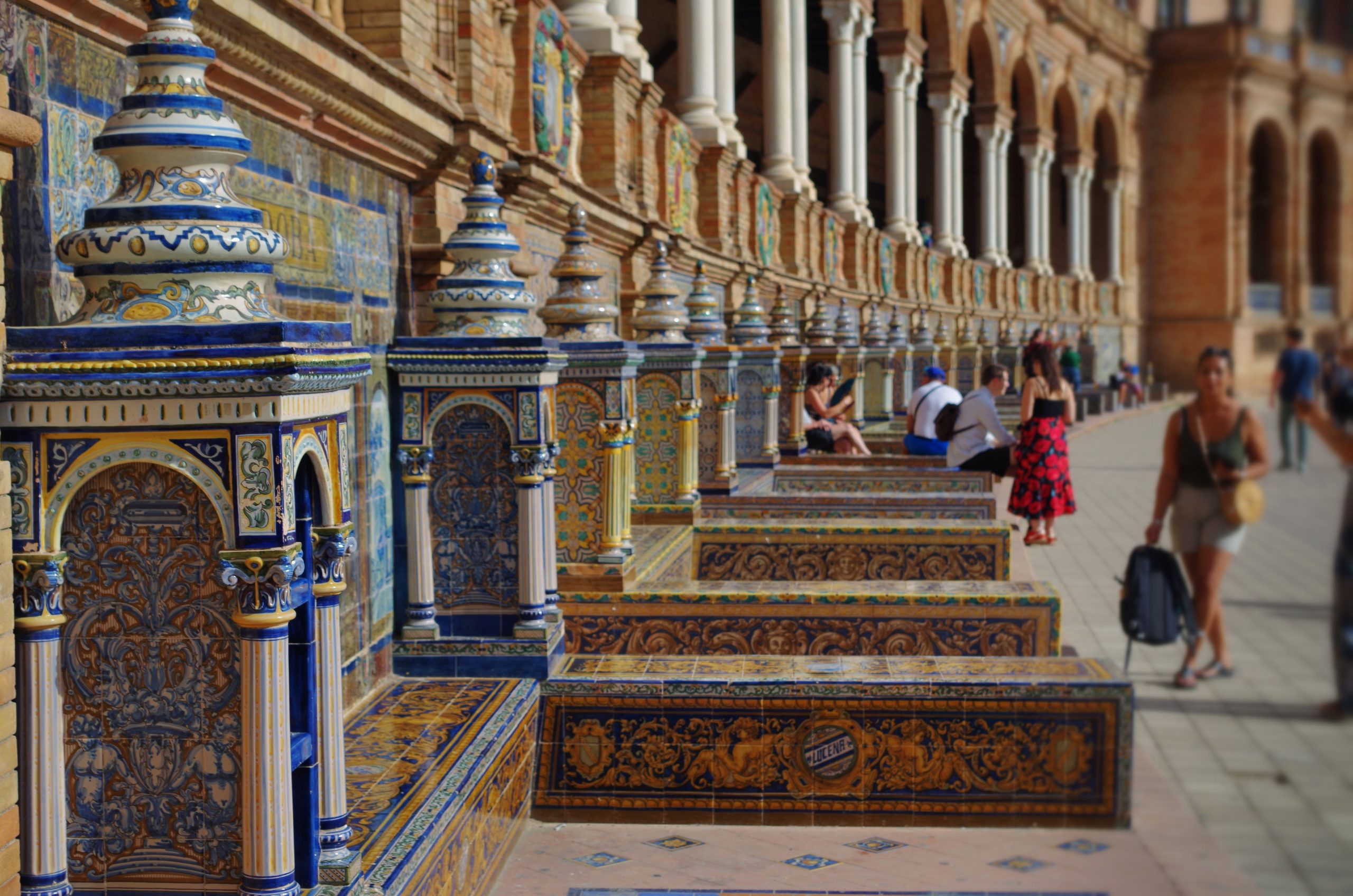

In 1992, on the 500th anniversary of Columbus's quest to explore the west road to India, the EXPO World Exhibition was organized in Seville (on the island of Cartuja, an island that had been artificially created centuries before because of the flooding river). Initially, it was to take place in Huelva, but it was decided that Seville was better suited for this purpose. 94 pavilions were built, used to this day as the headquarters of various companies. The organization of this exhibition was the reason for the city's modernization, construction of new roads, bridges, highways and high-speed rail.
